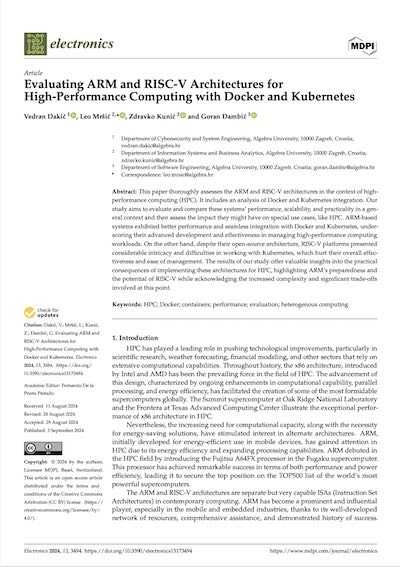Today's article comes from the journal of Electronics. The authors are Dakic et al., from Algebra University, in Croatia. In this paper, they run a performance-shootout between the RISC-V and ARM architectures to see which is more suitable for High Performance Computing with Kubernetes. Let's dive in and see what they found.
DOI: 10.3390/electronics13173494


You must be an active Journal Club member to access this content. If you're already a member, click the blue button to login. If you're not a member yet, click the sign-up button to get started.
Login to My Account
Sign Up